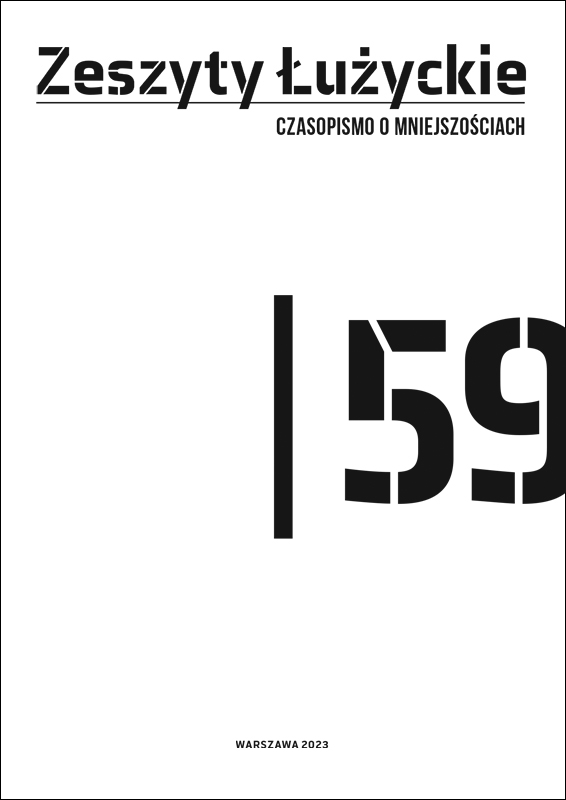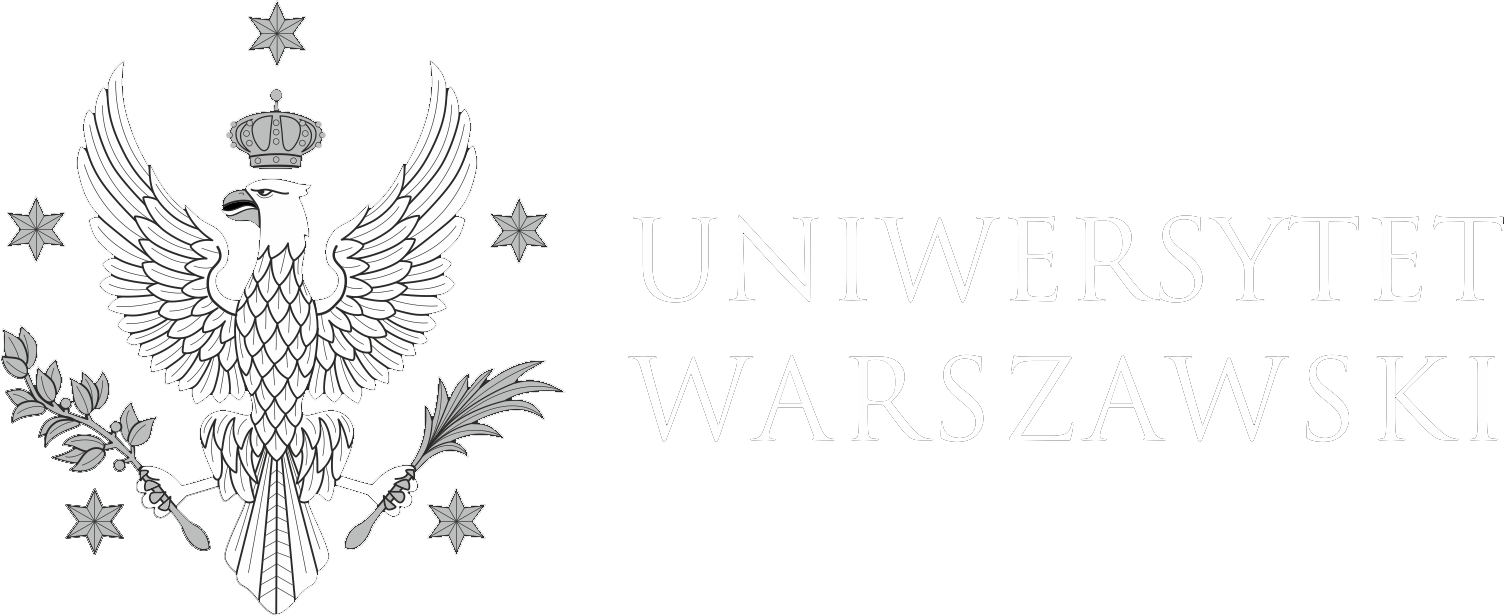Motivation and linguistic mediation as factors in university language teaching in the context of translator and interpreter training in minoritised languages
Abstrakt
The contribution presents the results of a long-term observation regarding motivation to learn minoritized languages carried out among students of translation and interpreting at the Leipzig University and regarding the role language mediation played in students’ motivation and academic success. The studies include surveys and analyses of the students’ learning progress and the grades obtained in two minoritized languages, Catalan and Galician. The analyses show a wide range of motivations also reported in other surveys on the matter, but additionally demonstrate a series of motives closely linked to the study programs and the linguistic mediation activities that are part of the courses and that decisively improve students’ performance in translation-related subjects in other languages, playing an important role as a motivating factor.
Bibliografia
Alonso–Bacigalupe L.; Romero–Fresco, P. (2023): Interlingual live subtitling: the crossroads between translation, interpreting and accessibility. In: Universal Access in the Information Society, DOI:10.1007/s10209-023-01032-8.
Bernaus i Griñó, Ò.; Sinner, C. (2016). La traducció com a eina d’aprenentatge d’una L2. In: Camps, N. et al. (eds.), L’ensenyament del català als territoris de parla catalana. Vic: Universitat de Vic – Universitat Central, 203–208.
Bonilla Carvajal, C.A. (2013). Método “traducción gramatical”, un histórico error lingüístico de perspectiva. In: Praxis & Saber 4 (8), 243–263.
Cenoz, J.; Gorter, D. (2023). Second language acquisition and minority languages. In: Cenoz, J.; Gorter, D. (eds.), The Minority Language as a Second Language Challenges and Achievements. New York: Routledge, 1–15.
Council of Europe (2007). Spracherziehung in Regional- oder Minderheitensprachen Empfehlung 222 (2007). https://rm.coe.int/spracherziehung-in-regional-oder-minderheitensprachen-berichterstatter/168071ac22. [26 Oct 2023].
Council of Europe (2017). Regional- und Minderheitensprachen im heutigen Europa. Empfehlung 410 (2017). https://rm.coe.int/regional-und-minderheitensprachen-im-heutigen-europa-ausschuss-fur-akt/168076814d. [26 Oct 2023]
Decke–Cornill, H.; Küster, L. (2009). Fremdsprachendidaktik. Tübingen: Narr.
Dörnyei, Z. (2001). Teaching and researching motivation. Harlow: Pearson Education.
Dörnyei, Z. (2009). The L2 Motivational Self System. In: Dörnyei, Z.; Ushioda E. (eds.). Motivation, language identity and the L2 self. Bristol: Multilingual Matters, 9–42. https://doi.org/10.21832/9781847691293-003.
Dörnyei, Z. et al. (2006). Motivation, language attitudes and globalisation: A Hungarian perspective. Clevedon: Multilingual Matters. https://doi.org/10.21832/9781853598876.
Dörnyei, Z.; Al-Hoorie, A.H. (2017). The motivational foundation of learning languages other than Global English: Theoretical issues and research directions. In: The Modern Language Journal 101 (3), 455– 468.https://doi.org/10.1111/modl.12408.
Duff, P. A. (2017). Commentary: Motivation for Learning Languages Other Than English in an English-Dominant World. In: The Modern Language Journal 101, 597–607. https://doi.org/10.1111/modl.12416.
Eichmeyer, D. (2020). Schriftdolmetschen – eine neue Translationsform unter dem Einfluss digitaler echnologien. In: Sinner, C. et al. (eds.), Translation 4.0. Dolmetschen und Übersetzen im Zeitalter der Digitalisierung. Berlin: Lang, 99–113.
Europarat: Rat für kulturelle Zusammenarbeit (eds.) (2001). Gemeinsamer Europäischer Referenzrahmen für Sprachen: lernen, lehren, beurteilen. München: Langenscheidt.
Flynn, C. (2020). Adult minority language learning. Motivation, identity and target variety. Bristol – Blue Ridge Summit: Multilingual Matters. https://doi.org/10.21832/9781788927048.
Flynn, C. J.; Harris, J. (2016). Motivational diversity among adult minority language learners: are current theoretical constructs adequate? Journal of Multilingual and Multicultural Development 37, 371–384. https://doi.org/10.1080/01434632.2015.1072204.
Gardner, R.C.; Lambert, W.E. (1972). Attitudes and motivation in second language learning. Rowley, MA: Newbury House.
Godwin–Jones, R. (2013). The technological imperative in teaching and learning less commonly taught languages. In: Language Learning & Technology 17 (1), 7–19. http://dx.doi.org/10125/24502.
Jäger, G. (1975). Translation und Translationslinguistik. Halle (Saale): Niemeyer.
Kade, O. (1968). Zufall und Gesetzmäßigkeit in der Übersetzung. Leipzig: Enzyklopädie.
Kade, O. (1980). Die Sprachmittlung als gesellschaftliche Erscheinung und Gegenstand wissenschaftlicher Untersuchung. Leipzig: Enzyklopädie.
Kalina, S. (1998). Strategische Prozesse beim Dolmetschen. Theoretische Grundlagen, empirische Fallstudien, didaktische Konsequenzen. Tübingen: Narr.
Knapp, K.; Knapp–Potthoff, A. (1985). Sprachmittlertätigkeit. In: Rehbein, J. (ed.), Interkulturelle Kommunikation. Tübingen: Narr, 450–463.
Kutz, W. (2003). Semantische Erschließung als dolmetschspezifisches Handlungsmuster. In: Emsel, M.; Hellfayer, A. (eds.), Brückenschlag. Beiträge zur Romanistik und Translatologie. Gerd Wotjak zum 60. Geburtstag. Frankfurt
am Main: Lang 235–258.
Kutz, W. (2009). Was heißt „Babyklappe“ auf Spanisch? Überwindungslücke als dolmetschspezifischer Problemfall. In: Lebende Sprachen 54 (3), 98–113. https://doi.org/10.1515/les.2009.027.
Kutz, W. (2012): Dolmetschkompetenz. Was muss der Dolmetscher wissen und können? Band 2. Berlin:
Europäischer Universitätsverlag.
Labov, W. (1966). The Social Stratification of English in New York City. Washington: CAL.
MacIntyre, P. et al. (2017). Heritage passions, heritage convictions, and the rooted L2 Self: Music and Gaelic language learning in Cape Breton, Nova Scotia. In: The Modern Language Journal 101 (3), 501–516. https://doi.org/10.1111/modl.12417.
Nakamura, T. (2019). Understanding motivation for learning languages other than English: Life domains of L2 self. In: System 82, 111–121. https://doi.org/10.1016/j.system.2019.03.006.
Neubert, A. (2007). Das unendliche Geschäft des Übersetzens. Leipzig: Sächsische Akademie der Wissenschaften.
Núñez Martínez, M.A. (2013). The protection of minority languages at the European level. In: UNED. Revista de Derecho Político 87, 101–128.
O Riagáin, D. (2001). The European Union and lesser used languages. In: International Journal on Multicultural Societies 3, 1, 33–43. https://unesdoc.unesco.org/ark:/48223/pf0000143770.
O’Rourke, B.; DePalma, R. (2017). Language-learning holidays: what motivates people to learn a minority language? In: International Journal of Multilingualism 14, 332–349. https://doi.org/10.1080/14790718.2016.1184667.
Ortner, S. B. (2017). New Jersey Dreaming: Capital, Culture, and the Class of ’58. Durham – London: Duke University Press.
Roediger, H. L.; Pyc, M.A. (2012). Inexpensive techniques to improve education: Applying cognitive psychology to enhance educational practice. In: Journal of Applied Research in Memory and Cognition 1 (4), 242–248. https://doi.org/10.1016/j.jarmac.2012.09.002.
Rosiak, K. (2022). The role of language attitudes and ideologies in minority language learning motivation. A case study of Polish migrants’ (de)motivation to learn Welsh. In: European Journal of Applied Linguistics 11 (1), 2651.
https://doi.org/10.1515/eujal-2021-0018.
Rosiak, K.; Hornsby, M. (2016). Motivational factors in the acquisition of Welsh in Poland. In: Studia Celtica Posnaniensia 1 (1), 57–73. https://doi.org/10.1515/scp-2016-0004.
Sinner, C. (2017). Sprachmittlung im universitären Übersetzungsunterricht. In: Hispanorama 155, 4–10.
Sinner, C. (2020). On Oral History in Translation and Interpreting Studies. In: Chronotopos. A Journal of Translation History 2, 63–144. https://doi.org/10.25365/cts-2020-2-1-5.
Sinner, C. (2022). Normalizando o galego en Alemaña. O papel da formación universitaria do galego en Leipzig. Cuadernos Europeos de Deusto Número especial 4, 137–172. https://doi.org/10.18543/ced.2475.
Sinner, C. (2024). Traductologie. In: Becker, L. et al. (eds.), Manuals of Romance Linguistics: Linguistique populaire. Berlin – Boston: de Gruyter Mouton, 203–217. https://doi.org/10.1515/9783110489033-010.
Sinner, C. et al. (2013). De las tinieblas a la luz: los presupuestos teóricos de la Escuela de Leipzig en lengua española. In: Wotjak, G. et al. (eds.), La Escuela traductológica de Leipzig. Sus inicios, su credo y su florecer 1965–1985). Frankfurt am Main: Lang, 7–20.
Sinner, C.; Asmus, S. (2014). Enseñar gramática, ¿pero cuál? La enseñanza de lenguas en proceso de normalización en contexto exolingüístico. In: Lenguaje y textos. Revista de la Sociedad Española de Didáctica de la Lengua y Literatura 40, 49–62.
Sinner, C.; Bahr, C. (2015). Reflexionen über didaktische Materialien zur Sprachmittlung im Fremdsprachenunterricht. Das Beispiel von ‚Kommunikativ stark – Sprachmittlung Spanisch‘ (Schöpp/Rojas Riether 2014). In: Hispanorama 150, 77–85.
Sinner, C.; Bernaus i Griñó, Ò. (2016). La realitat lingüística i sociolingüística a la classe de català com a L2. In: Camps, N. et al. (eds.): L’ensenyament del català als territoris de parla catalana. Estat de la qüestió i perspectives de futur. Vic: Universitat de Vic / Universitat Central de Catalunya, 297–305.
Sinner, C.; Bernaus, Ò. (2014). La docència de llengües minoritzades: el repte del català a Leipzig. In: Mirmanda. Revista de cultura 9, 98–108.
Sinner, C.; Hernández Socas, E. (2012). Wirklich keine Übersetzungen? Einige Überlegungen zum Paralleltextbegriff Paralleltextbegriff in der Übersetzungsdidaktik”. In: Lebende Sprachen 57 (1), 28–52.
Sinner, C.; Wieland, K. (2013). Eine translationswissenschaftliche Sicht auf Sprachmittlung im Fremdsprachenunterricht. In: Reimann, D.; Rössler, A. (eds.), Sprachmittlung im Fremdsprachenunterricht. Tübingen: Narr, 93–113.
The Plain English Campaign (2016): How to write in Plain English. www.plainenglish.co.uk/files/howto.pdf. [26 Oct 2023]
Thompson, A. S.; Vásquez, C. (2015). Exploring Motivational Profiles Through Language Learning Narratives. In: The Modern Language Journal 99 (1), 158–174. https://doi.org/10.1111/modl.12187.
Urla, J. et al. (2021). Basque standardization and the new speaker: Political praxis and the shifting dynamics of authority and value. In: Costa, J. et al. (eds.), Standardizing minority languages: Competing ideologies of authority and authenticity in the global periphery. New York: Routledge, 24–46.
van Lieshout, C.; Cardoso, W. (2022). Google Translate as a tool for self-directed language learning. In: Language Learning & Technology, 26 (1), 1–19. http://hdl.handle.net/10125/73460.
Votruba, M. (2017). Herder and Modernity: From Lesser-Taught Languages to Lesser-Taught Cultures. In: East/West: Journal of Ukrainian Studies 4 (1), 95–100.
Vygotsky, L. S. (1964). Denken und Sprechen. Berlin: Akademie.
Universität Leipzig Niemcy

Utwór dostępny jest na licencji Creative Commons Uznanie autorstwa 4.0 Międzynarodowe.
PRAWA AUTORSKIE
Rocznik „Zeszyty Łużyckie” jest wydawany na licencji niewyłącznej: Creative Commons - Uznanie autorstwa 3.0 PL (CC-BY)
(https://creativecommons.org/licenses/by/3.0/pl/legalcode). Przesłanie artykułu oznacza zgodę na jego udostępnienie na tej licencji. Licencja zostaje udzielona Wydawnictwom Uniwersytetu Warszawskiego na 5 lat (po upływie tego terminu przekształca się w zgodę udzieloną na czas nieoznaczony) na następujące pola eksploatacji:
• utrwalanie i zwielokrotnianie w dowolnej liczbie egzemplarzy (w tym w tłumaczeniu na inne języki) w znanych w dniu zawarcia niniejszego porozumienia technikach: drukiem w dowolnej formie, techniką cyfrową, techniką reprograficzną, za pomocą zapisu magnetycznego, zapisu na kliszy fotograficznej, oraz wprowadzania egzemplarzy do obrotu;
• wprowadzanie do sieci komputerowej Wydawcy;
• publiczne udostępnianie utworu w taki sposób, aby każdy mógł mieć do niego dostęp w miejscu i w czasie przez siebie wybranym, a w szczególności rozpowszechnianie w sieciach informatycznych, w tym komputerowych (Internet, sieci lokalne), telefonicznych oraz innych znanych w chwili zawarcia niniejszej umowy;
• najem, użyczanie;
• nadawanie za pomocą wizji i/lub fonii przewodowej albo bezprzewodowej przez stacje naziemne bądź satelitarne;
• kopiowanie i powielanie w technologiach fotomechanicznych lub innych znanych w dniu zawarcia porozumienia;
• publiczne odtwarzanie;
• wykorzystywanie do celów reklamowych i promocyjnych, w tym w sieciach informatycznych.





